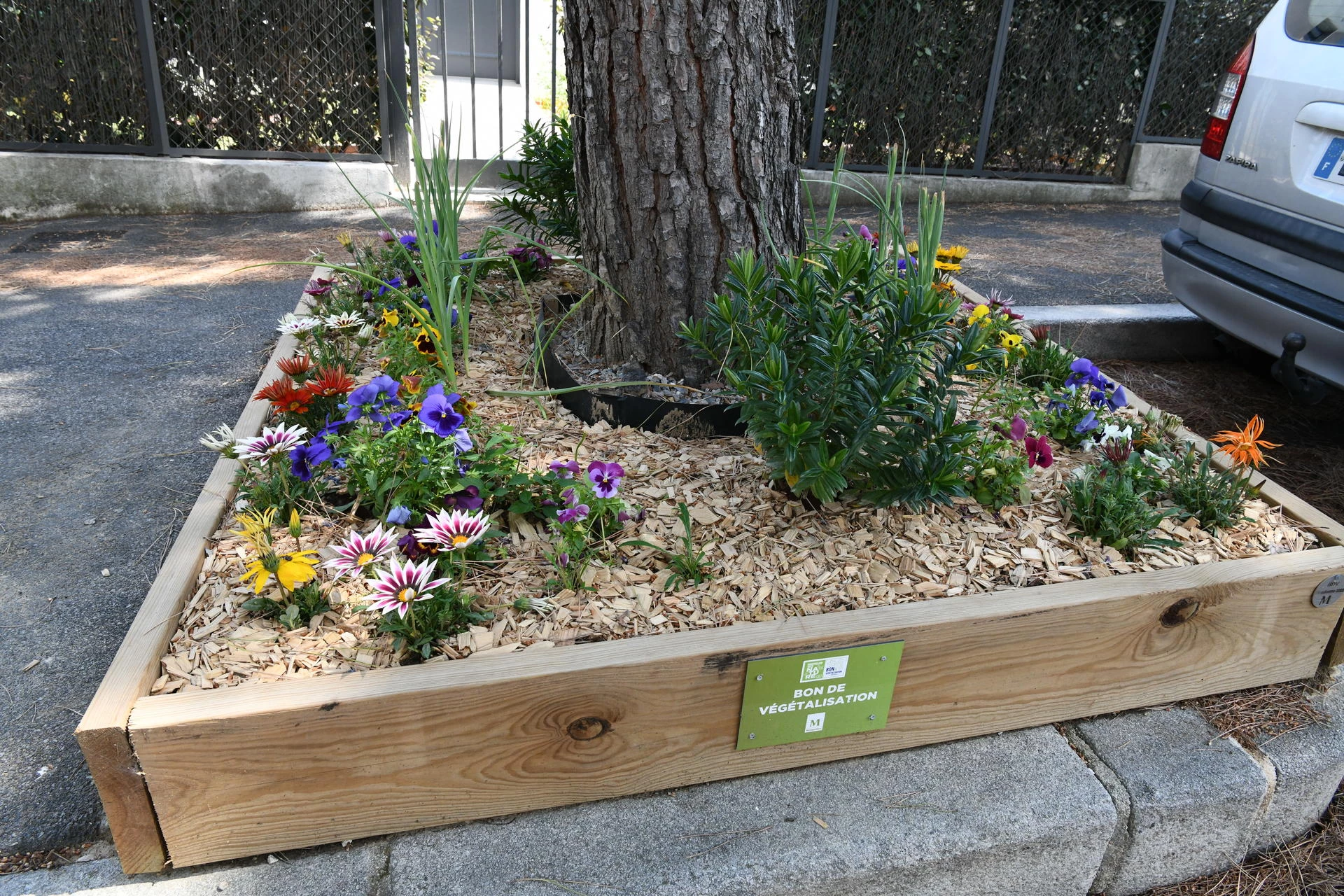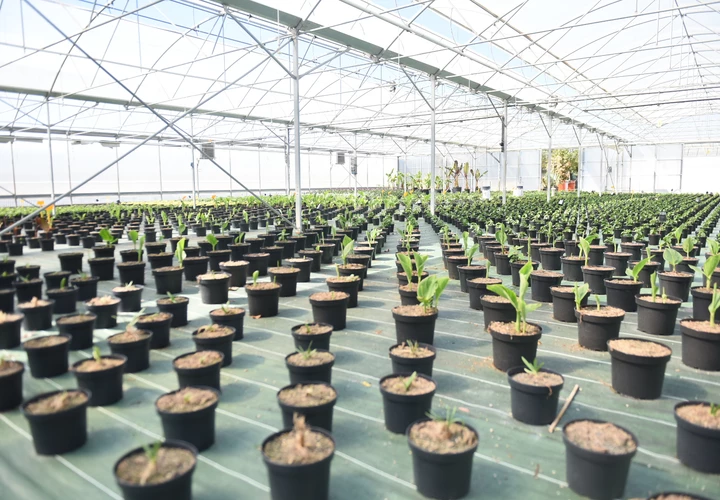Flowering at the foot of trees
What is tree planting?

Le pied d'arbre transforms the ground surface at the foot of an existing tree into a small urban garden. The City installs potting soil at the foot of the tree to raise the soil level and installs wooden bastaings to contain it.
How does it work?
You must indicate in your application which tree foot you wish to plant. This should be as close as possible to your home, if not right next to it. The space between the tree trunk and the kerb must be at least 30 cm.
If these conditions are met, the tree foot will be landscaped during the Vegetation vouchers allocation period (November). If necessary, the City will break the surface soil crust before adding topsoil.
In brief
What the city does:
- Add topsoil, and wooden bastaings at the foot of a tree
- Protect the collar (base of the trunk) with delta Ms and gravel
- Install in autumn
Installation and maintenance constraints:
- Have a tree (with 30cm diameter pit around the trunk) in the immediate vicinity of your home
- Don't bury the base of the tree trunk
- Don't fix anything directly to the trunk
Which species to plant?
- If you want flowers and foliage that change with the seasons, opt for perennials. Example: Agapanthus, Spanish Valerian, Common Gladiolus, Wolf's Mouth, Spiked Speedwell.
- If you want early spring or summer flowering, opt for annuals or biennials. Example: Garden wallflower, Starry astragalus, Blue catananche, Centaurea, Scabiosa.
- If you want greenery all year round with minimal maintenance, opt for succulents. Example: Remarkable Orpine, Echeveria, Kalanchoe, Crassula, Sedum.
- If you want full, decorative greenery, opt for shrubby or bushy plants. For example: Lavender, Rosemary, Ciste de Montpellier, Buplèvre, Myrtle.
Tree stands require species that will adapt despite the pollution of the site. It's up to you to choose the vegetation you plant. However, it's important not to plant toxic, thorny or stinging species. You must also be careful to choose species that already have a place in the ecosystem, preferably hardy and adapted to the sunshine in your space and to the urban context (heat, disturbance...).
In fact, an exotic species planted in the city can potentially become invasive. It then gains ground on local species and has a real impact on biodiversity. This is what is known as biological invasion, the second leading cause of biodiversity erosion worldwide.
The City advises against the installation of edible plants, due to the atmospheric pollution likely to be deposited on your crops. It's better to plant local species that will stand the test of time, despite the vagaries of weather and vandalism.
Tree care
Once in place, all you have to do is plant, maintain and water the base of the tree. Be careful, however, not to bury the base of the trunk, a very important organ in a tree, which could malfunction if need be.
Similarly, to avoid injuring the tree, no supports or attachments should be fixed to the trunk. In addition, no additional installation added at the foot of the tree should interfere with the traffic and safety of public road users.
Where and when can you collect your greening voucher?
The registration period runs each year from January 1 to June 30. Revegetation vouchers are distributed in November.
Climate issues are forcing us to be vigilant about water consumption and to choose the best planting period. The city of Montpellier has therefore decided to extend the vegetation voucher to one season/year.
If your application is accepted, your vegetation voucher is to be collected from the Centre Horticole municipal:

Serres municipales - Centre horticole
Moving house?
Please notify the Nature Agroecology and Landscape Department by phone or e-mail: 04 67 20 99 00 / dnap@montpellier.fr
